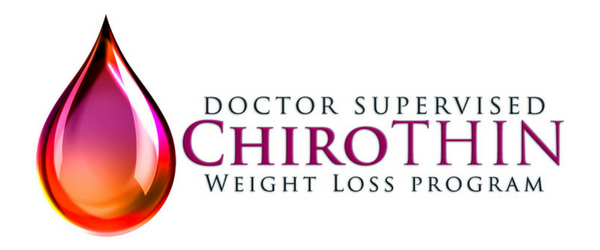
The New Year is upon us. If you are like many, your New Year’s resolution is to achieve your physical and mental health goals. But how do you do that if you don’t know which health metrics to track?
Fitness, heart health, diabetes risk, and nutritional wellness are among the most important indicators of good health. Learn what these metrics are and how to track them in this guide.
Fitness Metrics
Fitness is measured by looking at someone’s aerobic health, muscular strength and endurance, and body composition. Measuring BMI, METs, and heart rate variability and recovery can help you understand your fitness level and work on improving it.
BMI
Body mass index (BMI) measures the ratio of body fat to fat-free mass. Fat-free mass includes the weight of your muscles, bones, and organs and the water and minerals in your body.
A healthy BMI is 18.5 to 24.9, an overweight BMI is 25 to 29.9, and an obese BMI is over 30. You can calculate your BMI by dividing your weight by your height squared and multiplying the result by 703.
METs
Metabolic equivalent of task (MET) measures how your body uses energy. The more METs you get in a day, the lower your risk of all-cause mortality.
Experts assign METs to activities based on the level of intensity. Being able to sustain a vigorous-intensity MET for at least 8 minutes can significantly reduce your risk of dying.
Heart Rate Variability and Recovery
Heart rate variability and recovery are two distinct but related measurements of heart health. A higher heart rate variability score (65 for men; 62 for women) is correlated with improved heart health. A higher heart rate recovery score (22 to 52 beats per minute) reduces the risk of cardiovascular issues.
You can measure your heart rate variability (HRV) and recovery at home. HRV scores are available with many fitness trackers. Heart rate recovery can be found by measuring your heart rate directly after strenuous exercise and a few minutes after recovery, then subtracting the former number from the latter.
Heart Health Metrics
Heart disease is the #1 cause of death in the United States. The good news is that it is preventable. Tracking important heart health metrics can help you make better choices to reduce your cardiovascular disease risk.
Blood Pressure
High blood pressure is a risk factor for heart disease, stroke, and other serious health conditions. 120/80 millimeters of mercury (mmHg) is normal. Anything over 130/80 mmHg is high blood pressure.
While measuring your blood pressure yourself is possible, you will need specialized equipment. The easier and more affordable choice is to have your blood pressure taken by a healthcare professional.
Cholesterol and Triglyceride Levels
High LDL cholesterol and triglyceride levels are risk factors for cardiovascular disease. Healthy LDL cholesterol levels are less than 100 milligrams per deciliter (mg/dL) in people who do not have heart disease or diabetes. Healthy triglyceride levels are less than 150 mg/dL for adults.
At-home tests are available to test your LDL and triglyceride levels. However, these tests should never replace having these metrics tested by a healthcare professional.
Resting Heart Rate
Resting heart rate measures your heart rate while at rest. The lower your resting heart rate is, the better your cardiovascular health. An adult’s normal resting heart rate ranges from 60 to 100 beats per minute.
You can calculate your resting heart rate by taking your pulse for 60 seconds. Sit very still for at least 10 minutes before measuring your pulse.
Diabetes Risk Metrics
Diabetes is the eighth leading cause of death in the US. Checking your fasting insulin and blood glucose levels can help you identify your risk and take steps to lower it.
Fasting Insulin Levels
Fasting insulin levels are one of the first indicators of pre-diabetes. These tests can identify the risk for diabetes earlier than blood glucose tests. Healthy insulin levels after 8 hours of fasting should be less than 25 milli-international units per liter (mIU/L).
Unlike blood glucose, insulin levels cannot be measured at home. You will need to see a healthcare provider to track this metric.
Blood Glucose Levels
Blood glucose is also known as blood sugar. People who are at risk for diabetes may have high blood sugar levels if their bodies do not produce enough insulin. People with hypoglycemia have blood sugar levels that are too low.
Healthy blood glucose levels after fasting for at least 8 hours are less than 99 mg/dL. This type of blood sugar test is called a fasting blood glucose test.
A second way to measure blood glucose is with a hemoglobin A1C test. This test measures blood sugar levels over the past few months. Healthy A1C levels are 5.7% or lower.
You need a finger-prick test, flash glucose monitor, or CGM to test your blood glucose levels at home. A healthcare provider can also perform the test for you.
Nutritional Wellness Metrics
Nutritional wellness is an indicator of both immune and mental health. Of all nutrients, vitamin D and essential fatty acids are the most important metrics to track.
Vitamin D Levels
Vitamin D is an essential nutrient we get from sun exposure and certain foods. Getting enough of this nutrient is crucial for a healthy immune system and brain, as well as good muscle and bone health. Vitamin D levels should be above 20 nanograms per milliliter (ng/mL).
You can order a nutrient blood test for at-home use. You’ll collect a blood sample and send it to a lab for analysis. Or you can see a healthcare provider to have your vitamin D levels tested.
Essential Fatty Acid Levels
Fatty acids benefit your whole health, reducing cardiovascular and all-cause mortality risk and benefiting the brain, skeletal system, and mental health. A healthy adult should get at least 1.1 to 1.6 grams of fatty acids daily.
At-home tests are also available to measure your omega fatty acid levels and their ratios. These tests work similarly to vitamin D at-home tests. You can also see your healthcare provider to have your essential fatty acid levels tested.
Get Your Health on Track With ChiroThin
Fitness, heart health, diabetes risk, and nutritional wellness metrics can help you learn more about your physical and mental condition. Use this guide to track these metrics and identify areas of your lifestyle that need improvement.
Are you ready to get started on the path to a healthier you? Click here to find a ChiroThin doctor in your area.
